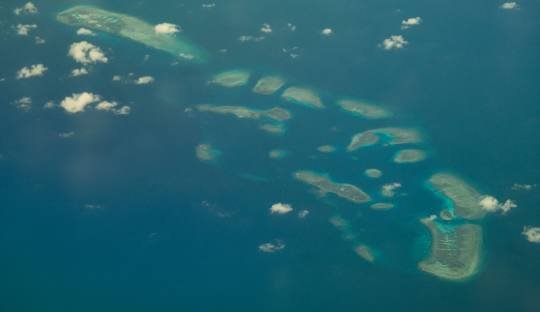
The West Philippine Sea (WPS) has long been a flashpoint of geopolitical tensions, primarily between China and the Philippines. These tensions have escalated significantly in recent months, particularly around Sabina Shoal, a small but strategically important maritime feature. This area has seen increased military activity, confrontations between vessels, and a war of words between the involved nations. The situation has reached a critical point where the risk of conflict is no longer just theoretical but an immediate concern.
Sabina Shoal, located within the Philippines’ exclusive economic zone (EEZ), has been a focal point of disputes in the WPS. Despite the Permanent Court of Arbitration’s 2016 ruling in favor of the Philippines, China has continued to assert its claim over the area, citing historical rights. This has led to numerous confrontations between Chinese and Philippine vessels, often resulting in diplomatic protests and increased military presence in the region.
The WPS, a vital maritime route rich in resources such as fish and potential oil and gas reserves, is claimed by multiple countries, with China being the most assertive. The shoal’s strategic location makes it a crucial point for both commercial and military activities, further intensifying the stakes for all involved parties. The latest developments at Sabina Shoal underscore the fragility of the situation, with both nations unwilling to back down from their respective claims.
In August 2024, tensions at Sabina Shoal reached a new peak. The Chinese Coast Guard accused the Philippines of illegal intrusion into what it claims as Chinese territorial waters near Sabina Shoal. This accusation followed a series of incidents where Chinese and Philippine vessels came dangerously close to colliding. The Chinese Coast Guard deployed water cannons and other aggressive tactics to drive away Philippine ships, marking a significant escalation in the ongoing dispute.
The Philippine government responded by deploying its largest Coast Guard vessel, the BRP Teresa Magbanua, to the area. The presence of this ship, alongside other Philippine Navy assets, signals Manila’s intent to assert its sovereignty over Sabina Shoal. The deployment was a clear message to Beijing that the Philippines is prepared to defend its territorial waters, even if it means confronting a more powerful adversary.
This escalation was further complicated by the involvement of the United States, a treaty ally of the Philippines. While Washington has reiterated its commitment to defending Philippine sovereignty, its actual response has been more measured, focusing on diplomatic pressure rather than military intervention. This has led to criticism within the Philippines, with some arguing that the U.S. has not done enough to support its ally in the face of Chinese aggression.
The legal basis for the Philippines’ claim to Sabina Shoal is rooted in the 2016 ruling by the Permanent Court of Arbitration, which invalidated China’s expansive “nine-dash line” claim over the South China Sea. The ruling, however, did not result in any concrete changes on the ground, as China rejected the decision and continued its activities in the disputed areas, including Sabina Shoal.
International law plays a crucial role in this conflict, as both sides seek to legitimize their actions through legal arguments. The Philippines has consistently invoked the 2016 ruling to assert its rights, while China has relied on historical claims and its growing military presence to back its assertions. The lack of enforcement mechanisms for the arbitral ruling has allowed China to continue its activities unchecked, leading to the current stalemate.
The international community, including the United Nations and ASEAN, has called for a peaceful resolution to the dispute, urging both sides to adhere to international law. However, these calls have largely fallen on deaf ears, as the situation at Sabina Shoal continues to deteriorate. The inability of international bodies to enforce the 2016 ruling highlights the limitations of international law in resolving such complex and deeply rooted disputes.
The escalation at Sabina Shoal has significant implications for regional stability. The WPS is not only a vital maritime route but also a potential flashpoint for conflict involving multiple nations. The presence of U.S. military forces in the region, combined with China’s growing naval capabilities, creates a volatile environment where a small incident could quickly spiral into a larger conflict.
For the Philippines, the situation at Sabina Shoal is a test of its resolve to defend its territorial integrity. The government of President Ferdinand Marcos Jr. has made it clear that it will not back down, even as it seeks to balance its relationship with both China and the United States. The deployment of the BRP Teresa Magbanua is a bold move, but it also increases the risk of miscalculation and unintended escalation.
China, on the other hand, views the WPS as a core interest, and any perceived threat to its claims is met with a strong response. The Chinese government has used the situation at Sabina Shoal to rally domestic support and assert its position on the global stage. However, this approach also risks alienating its neighbors and further entrenching opposition to its actions in the region.
The broader implications of the Sabina Shoal conflict extend beyond the immediate area. The WPS is a key part of the Indo-Pacific strategy for both the United States and its allies. Any conflict in this region could disrupt global trade routes, impact energy supplies, and lead to a broader geopolitical realignment. The stakes are high, and the need for de-escalation is more urgent than ever.
Diplomatic efforts to resolve the Sabina Shoal conflict have been ongoing but have so far yielded limited results. ASEAN, the regional organization that includes both the Philippines and China as members, has been at the forefront of these efforts. However, ASEAN’s ability to mediate the dispute is hampered by its consensus-based decision-making process, which often leads to watered-down statements that fail to address the core issues.
The Philippines has also sought to engage with other ASEAN members to build a united front against China’s actions in the WPS. While there is broad support for the Philippines’ position, some ASEAN countries have been reluctant to take a strong stance due to their economic ties with China. This division within ASEAN has made it difficult to present a unified response to the Sabina Shoal crisis.
The role of the United States in diplomatic efforts is also crucial. Washington has reiterated its commitment to the Mutual Defense Treaty with the Philippines, which obligates the U.S. to come to the defense of its ally in the event of an armed attack. However, the U.S. has also emphasized the need for a peaceful resolution to the conflict and has called on China to respect international law.
China, for its part, has sought to engage in bilateral talks with the Philippines, offering economic incentives in exchange for concessions in the WPS. While these offers have been tempting, the Philippine government has so far resisted, wary of compromising its territorial claims. The challenge for Manila is to navigate these diplomatic waters without alienating its allies or appearing weak in the face of Chinese pressure.
The most immediate concern arising from the Sabina Shoal situation is the risk of military confrontation. The close proximity of Chinese and Philippine vessels, combined with the aggressive tactics employed by both sides, creates a highly dangerous environment. Even a minor incident, such as a collision or miscommunication, could escalate into a full-blown conflict.
The presence of U.S. military assets in the region adds another layer of complexity. While the U.S. has so far limited its involvement to diplomatic support and joint exercises with the Philippine military, the potential for direct involvement cannot be ruled out. Any escalation at Sabina Shoal could draw in the U.S., leading to a broader conflict that would have far-reaching consequences for the region and beyond.
The Philippines’ military capabilities are also a factor to consider. While the country has made significant strides in modernizing its armed forces, it remains outmatched by China’s military power. This imbalance raises concerns about the Philippines’ ability to defend its claims in the WPS and the potential costs of doing so.
The risk of military confrontation underscores the urgent need for de-escalation and confidence-building measures. Both sides must exercise restraint and avoid actions that could provoke a response. The international community, particularly ASEAN and the United States, should play a more active role in facilitating dialogue and reducing tensions.
The conflict at Sabina Shoal also has significant economic and environmental implications. The WPS is a major shipping route, and any disruption to this area could have a ripple effect on global trade. The Philippines, as a coastal state, has a vested interest in maintaining the security and stability of these waters, not only for economic reasons but also for environmental protection.
The WPS is home to some of the world’s most diverse marine ecosystems, which are already under threat from overfishing, pollution, and climate change. The increased military activity in the area poses additional risks to these fragile environments. The use of sonar, underwater explosions, and other military tactics can have devastating effects on marine life, further exacerbating the environmental challenges in the region.
For the Philippines, the economic stakes are also high. The country relies heavily on the WPS for fishing, and any conflict in the area could disrupt these activities, leading to food security concerns. The potential for oil and gas exploration in the WPS also adds another layer of complexity to the dispute, as both the Philippines and China have competing claims to these resources.
The situation at Sabina Shoal is a stark reminder of the volatility of the WPS dispute and the urgent need for de-escalation. The current trajectory of events is unsustainable and could lead to a conflict that neither side can afford. The Philippines and China must find a way to manage their differences through dialogue and diplomacy, rather than through force.
The international community, particularly ASEAN and the United States, has a critical role to play in facilitating this dialogue. Confidence-building measures, such as joint maritime patrols and the establishment of communication hotlines, could help reduce the risk of miscalculation and build trust between the parties. It is also essential to involve other stakeholders in the region, including Japan, Australia, and India, who have a vested interest in maintaining the stability of the Indo-Pacific.
Ultimately, the resolution of the Sabina Shoal conflict will require a long-term commitment to diplomacy, respect for international law, and a willingness to compromise. The stakes are too high for any other outcome. The Philippines and China must recognize that their mutual interests are best served by a peaceful and stable WPS, where cooperation, rather than confrontation, is the norm.
The escalation of tensions at Sabina Shoal is a critical test for the Philippines, China, and the broader international community. The potential for conflict is real, and the consequences of such a conflict would be devastating for the region and beyond. It is imperative that all parties involved take immediate steps to de-escalate the situation, uphold international law, and work towards a peaceful resolution. The future of the WPS and the stability of the Indo-Pacific depend on it.







